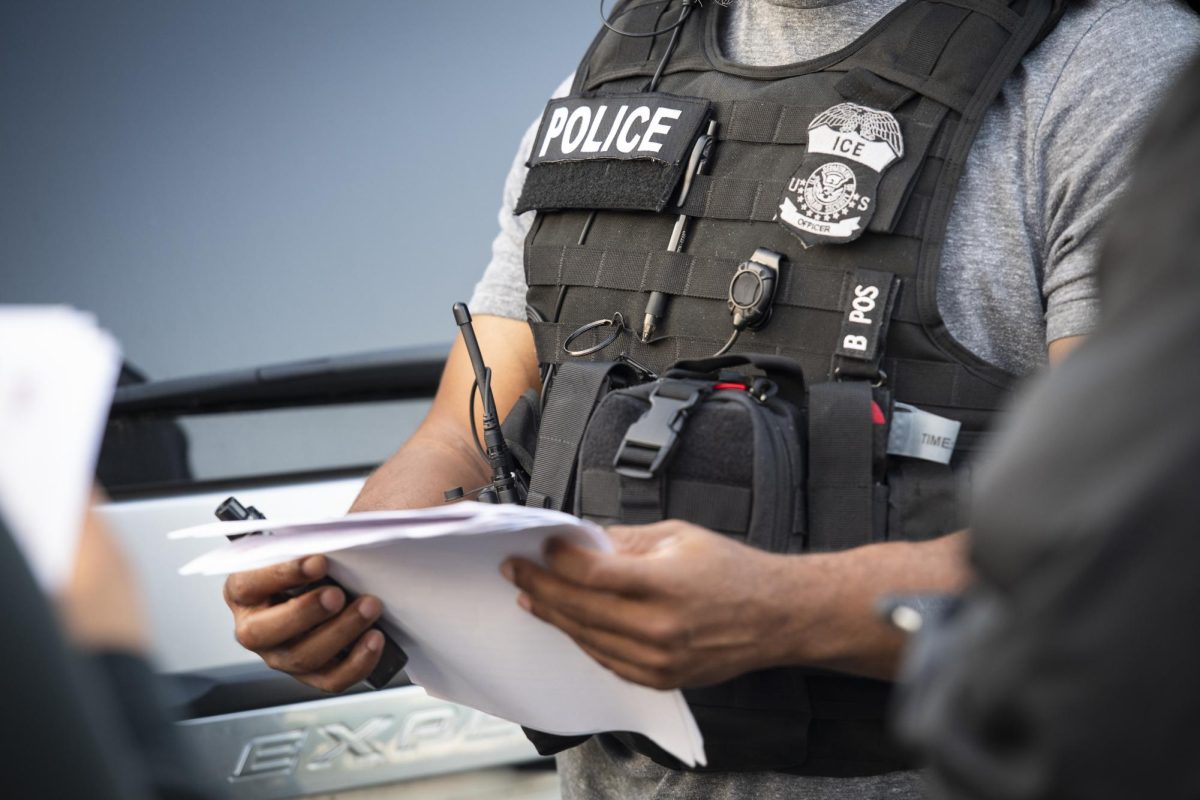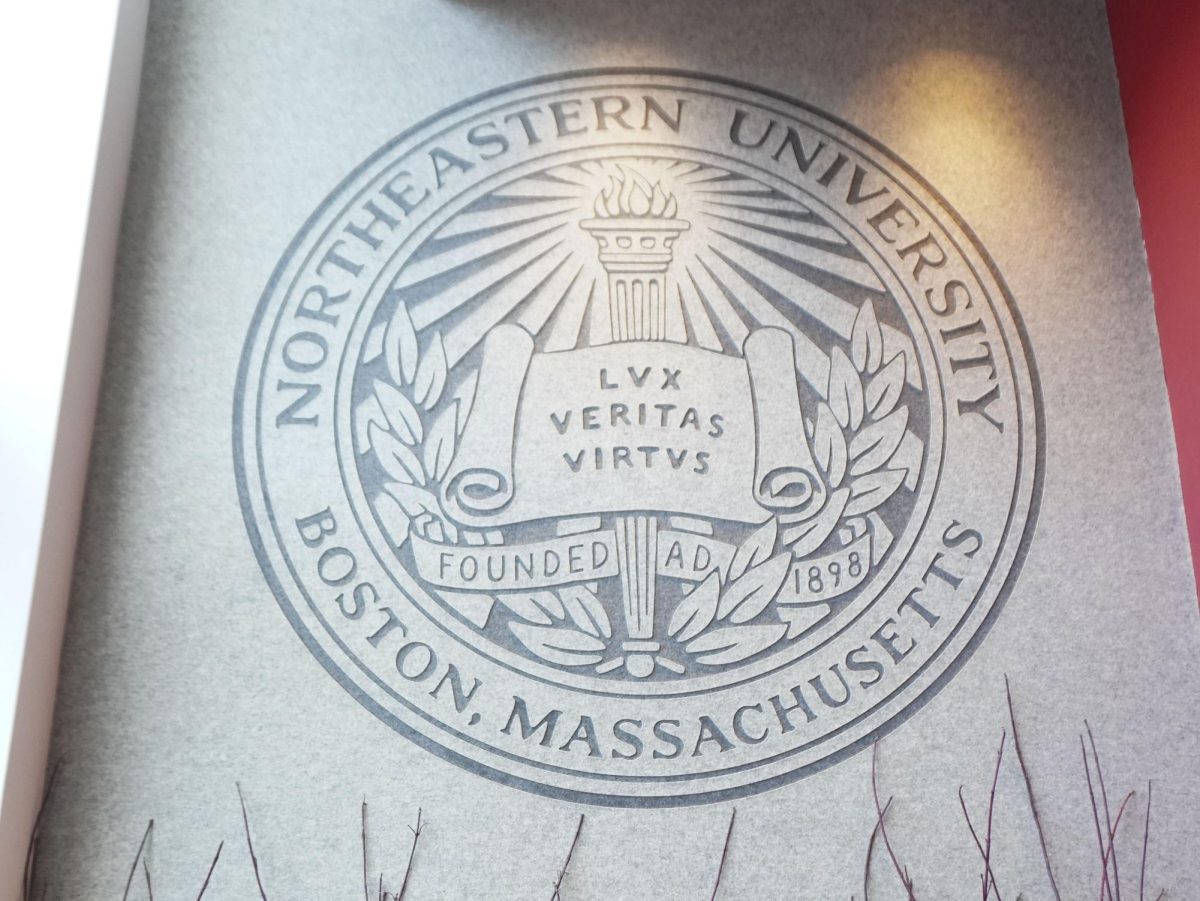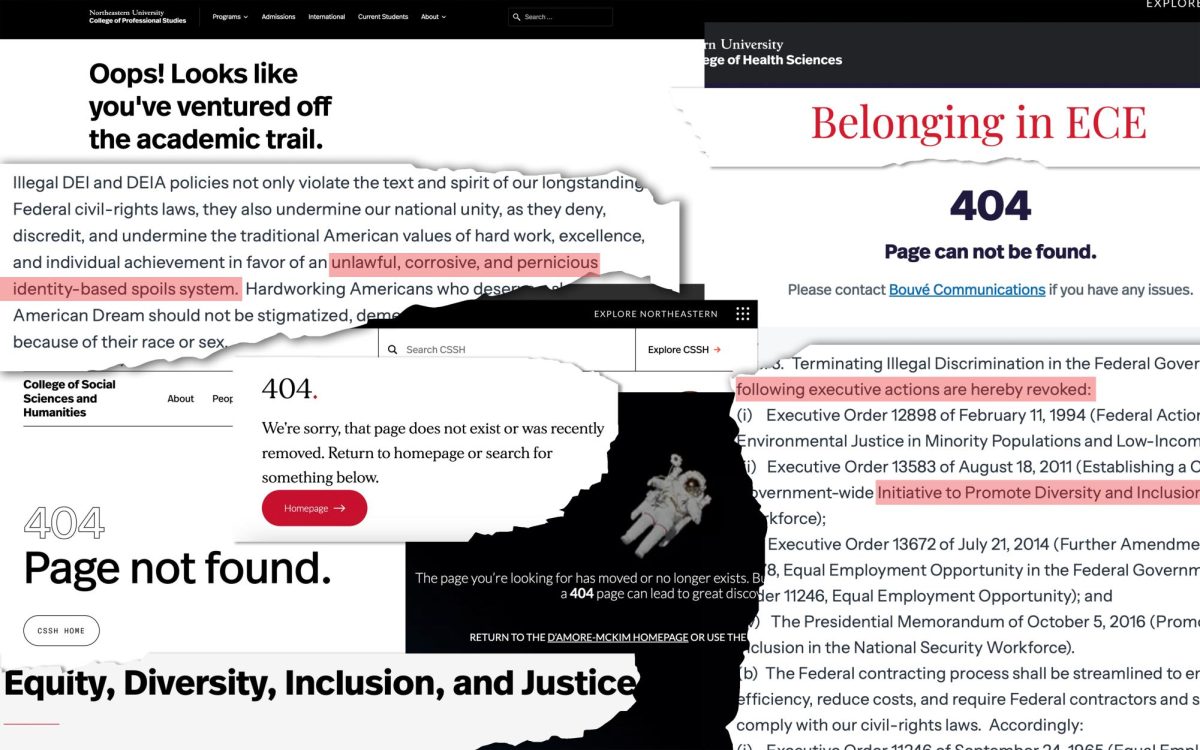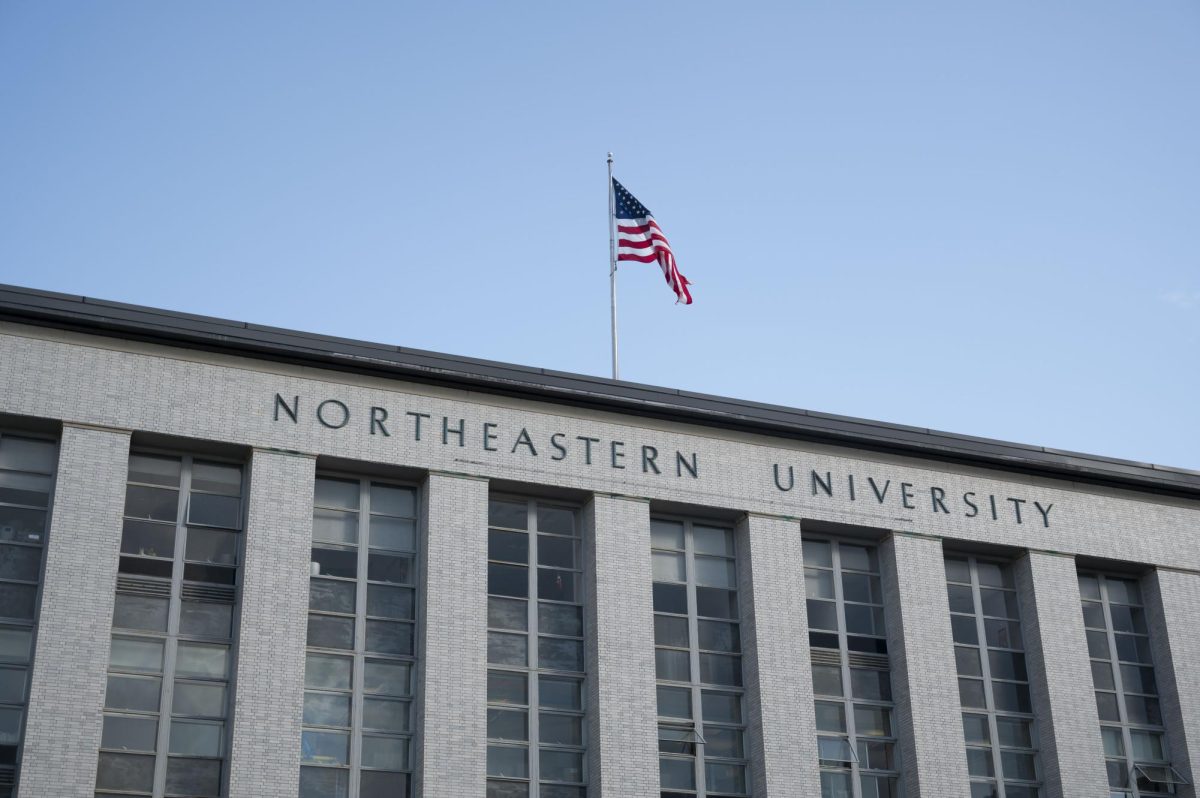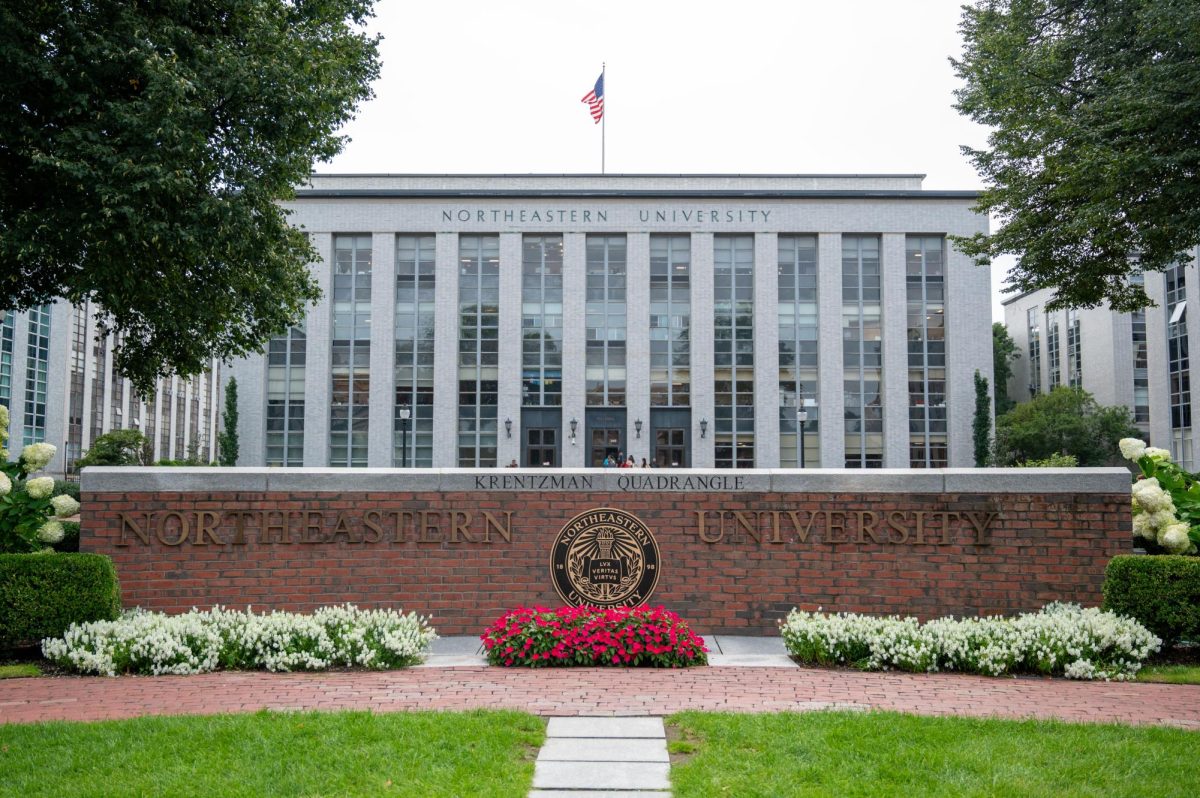There are elliptical symbols scrawled on surfaces around the city: on pillars, under overpasses, low walls atop apartment buildings, the side of buildings like the Hollywood Nail Salon and in alleys alongside Hemenway Street.
While it is a felony to tag a building, graffiti is everywhere. The art form has crept onto campus, tempting some Northeastern students to partake in the taboo culture, which has spawned its own stars, enemies, specialized tools and vocabulary.
On Thursday night, four local “taggers,” or graffiti artists, huddled in the foyer of the John D. O’Bryant African-American Institute. They reveled in the work of “writers,” a more esteemed term for taggers, who spray paint Boston buildings with cryptic monikers like So, Teaze, Ryze and Dose.
As these taggers spotted police officers outside, they became concerned, remembering that anyone in the crowd could be a member of Boston’s Vandal Squad, a division of undercover cops.
“They hang out on trains and take away taggers’ rights using a lot of circumstantial evidence,” said Jason Talbot, 30, of Boston. “Their goal is to stop people from breaking the law when they break it themselves, performing illegal searches. It’s really disrespectful to the art form.”
But the authorities aren’t enough to stop the taggers; such disdain seems irrelevant to many who feel their form of expression is far more benign than their other available options.
“We are so pleased to have this presentation here at Northeastern,” said Nuri Chandler-Smith, coordinator for the African-American Institute, when introducing Jim Prigoff. A street art historian, Prigoff began explaining that graffiti is nothing new: primitive man began the trend, drawing symbols on cave walls, he said.
Prigoff began to photograph spraycan art in the 1980s, after two decades documenting murals in Europe and Mexico. He said he couldn’t help recording the “other writings on the wall,” and how they evolved throughout cities like San Francisco, New York and Barcelona, Spain.
He described slides of pictures during the presentation, displaying his favorite street art. More elaborate works, sometimes collaborated, are called “pieces,” and are painted on handball walls, trains or other large surfaces. Some topliners circumvented the streets, using canvases. But amateur graffiti artists developed their signature “throw-ups,” or name tags. Designs beyond conceivable reach were called “heavens.” Graffiti has become pop art, he said, and some is in museums, sometimes sold for millions of dollars.
“Police would like you to think that all ‘graf’ art is gang-related,” Prigoff said. “It’s actually a very small percentage. I’ve never had a problem with any of these people, wearing my buttoned shirts and shoes, being all white.”
Though Prigoff’s taste in graffiti became refined, he believes anyone has the right to tag, he said. He sees economic disparity and commercialization as reasons society condemns the graffiti he documents, but accepts other kinds of graffiti that is advertised to them.
“The ugliest graffiti is billboards,” he said. “I don’t want them in my face. But people pay money and so it becomes OK.”
Prigoff asked the audience to become “part of the billboard alternation society.”
“If you feel the billboard message isn’t right, use your privilege as a member of the society to change the message,” he said.
After the presentation, Prigoff was joined in a panel by two street artists: Click-ONE, of Mattapan, and MARKA27, of Boston. They discussed dealing with fear of police while in action and addressed questions concerning whether to condone street-art when practiced by beginners.
“You can’t turn into Picasso overnight,” Prigoff said.
Prigoff explained that most inner-city schools lack art classes. He cites this as a reason some students drop out and pick up spray paint.
“Would you rather a kid pick up a spray can, a gun or a crack pipe?” Click-ONE asked. “A lot of killings have been going on around here: But graffiti is a safe way to let out that frustration on the city. Would you rather see a wall or a person get hurt?”
MARKA27 said he sees a societal pattern in which forms of expression are rejected.
“When jazz came out they called it jungle music,” he said. “When rap came out, it was called rape music. Everything we do, when we first do it, gets looked down upon until the avant-garde crowd in America appreciates it. Every culture has the right to produce its own work and this is ours.”
Still, some community members disagree with the message.
“Panels like this confuse people and wonder, ‘Gee, isn’t this art, isn’t it art?’ It’s not,” said Ann Swanson, spokesperson for Graffiti NABBers, an offshoot of the Neighborhood Association of Back Bay’s crime committee. “I think [this event] really serves the vandals and that is unfortunate … Graffiti is the most expensive property crime in America. We need that money for the parks and keeping the trees alive.”
Northeastern spends about $40,000 removing graffiti each year, said Peter Conroy, campus maintenance inspector. Boston spends about $400,000 removing graffiti each year, said Mike Bartosiak, executive director for “Wipe It Clean,” the city’s removal program.
But this disagreement cannot be attributed to only high school drop-outs.
“I know one student that tagged outside of Stetson West a few times,” said PJ Branco, a sophomore undecided major, who said he has recently been allured to the culture but has never tagged on the streets. Branco idolizes famous graffiti artists like Banksy of Britain and keeps Facebook photo albums of graffiti he sees in Boston.
“It’s wicked tempting once you start getting into the culture,” he said. “I’ve been brought up to never do anything wrong and to get good grades. So that’s what’s kinda holding me back.”




